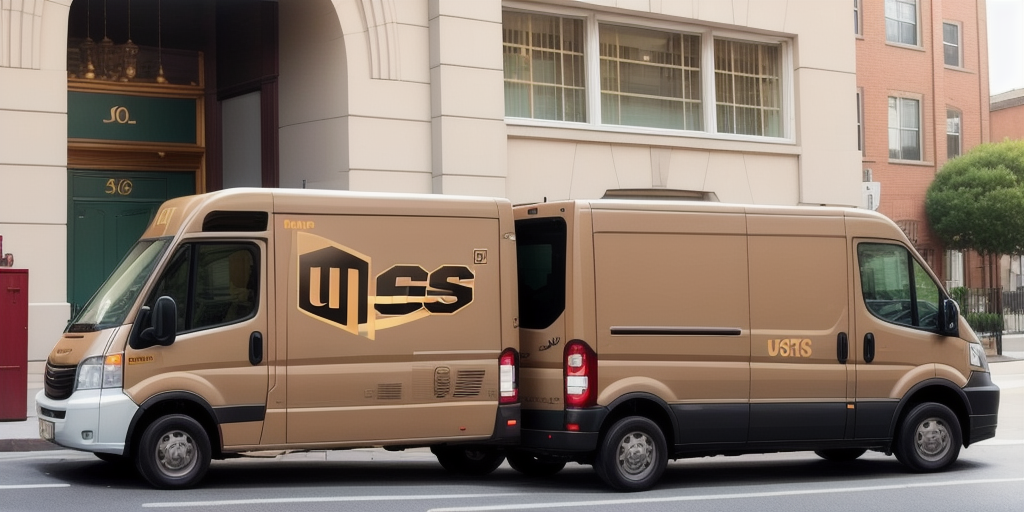The Historical Evolution of UPS Shipping Rates
UPS shipping rates have been a topic of discussion among businesses and consumers for years. Founded in 1907 as a messenger service, UPS expanded into package delivery in the 1920s and 1930s. Initially, ground shipping rates were relatively low, reflecting the modest costs of fuel, labor, and infrastructure at the time.
Over the decades, shipping costs have gradually increased due to inflation and economic changes. In the late 1990s and early 2000s, the rise of eCommerce accelerated rate hikes as demand for faster and more efficient shipping surged. UPS responded by investing heavily in technology and infrastructure, including automated sorting facilities and advanced tracking systems. These improvements enhanced customer experience but also contributed to higher shipping rates. Increased competition from other carriers has further pressured UPS to balance competitive pricing with continuous investment in new technologies.
Key Factors Driving UPS Shipping Rate Increases
Rising Fuel Costs
Fuel prices significantly impact shipping costs. As gasoline and diesel prices climb, UPS faces higher expenses for powering its trucks and planes. These increased costs are directly passed on to consumers through higher shipping rates. According to the U.S. Energy Information Administration, fluctuations in fuel prices have a profound effect on operational costs for logistics companies.
Growth of eCommerce
The exponential growth of eCommerce has led to a dramatic increase in the volume of packages that UPS must handle. This surge in demand requires substantial investments in infrastructure and technology to maintain efficiency and meet customer expectations. The Statista eCommerce Report 2023 highlights that global eCommerce sales are projected to reach $6.54 trillion by 2023, further straining shipping resources and increasing costs.
Infrastructure and Technology Investments
Maintaining and expanding UPS’s extensive infrastructure—including planes, trucks, and warehouses—is a significant expense. The company continuously invests in new facilities, technology upgrades, and automation to enhance operational efficiency. These investments, while beneficial for service quality, contribute to the rising shipping rates observed today.
Labor Costs
Labor costs are another critical factor in the increase of UPS shipping rates. Wages and benefits for UPS employees have risen due to inflation, collective bargaining agreements, and the need to hire additional staff to handle the growing volume of shipments. The Bureau of Labor Statistics reports that transportation and warehousing wages have increased steadily over the past decade, directly impacting shipping costs.
The Impact of Fuel Prices on Shipping Rates
Fuel prices are a major determinant of shipping costs. UPS, like other shipping companies, adjusts its rates in response to fuel price fluctuations to manage its operating expenses. For instance, the spike in fuel prices during the mid-2000s due to geopolitical tensions and increased global demand significantly drove up shipping rates.
Recently, there has been a shift towards more fuel-efficient shipping methods. UPS is investing in electric and hybrid vehicles, as well as alternative fuels like biodiesel, to reduce fuel consumption and mitigate the impact of rising fuel prices. These initiatives not only help lower operational costs but also contribute to sustainability efforts.
Additionally, the distance between the origin and destination of packages affects shipping costs. Longer distances require more fuel and resources, resulting in higher shipping rates. International shipments typically incur higher costs compared to domestic ones due to the increased logistical demands.
Influence of Infrastructure and Labor Costs
Infrastructure Investments
UPS’s vast infrastructure network includes planes, trucks, warehouses, and distribution centers. Maintaining and expanding this network is capital-intensive. As eCommerce grows, UPS must continue investing in infrastructure to handle the increased volume of shipments, which in turn drives up shipping rates.
Labor Costs and Automation
Labor costs have risen due to higher wages and the need for more employees to manage the increased shipment volumes. UPS has also invested in automation and advanced technologies to enhance efficiency. While automation reduces long-term labor costs, the initial investments contribute to higher shipping rates.
Moreover, the demand for expedited shipping services like same-day and next-day delivery requires additional resources and manpower, further increasing operational costs and shipping rates.
The Role of eCommerce in Shaping Shipping Rates
The rise of eCommerce has been a pivotal factor in the increase of UPS shipping rates. With more consumers shopping online, the volume of packages has surged, necessitating significant investments in technology and workforce expansion. According to the eMarketer, global eCommerce sales grew by 27.6% in 2022, continuing to drive demand for shipping services.
Expedited shipping options, such as same-day and next-day delivery, have become increasingly popular. While these services enhance customer satisfaction, they require additional resources, contributing to higher shipping costs. The COVID-19 pandemic further amplified this trend, as more people turned to online shopping, leading to capacity shortages and increased rates.
Comparative Analysis of Major Shipping Carriers
UPS is not alone in raising shipping rates; other major carriers like FedEx and the United States Postal Service (USPS) have also adjusted their rates in response to similar economic pressures. When choosing a shipping provider, it's essential to compare rates, services, and reliability.
For example, FedEx offers a range of services comparable to UPS, including international shipping and expedited options. The USPS provides competitive rates for domestic shipping and has expanded its package handling capabilities in response to eCommerce growth.
Evaluating customer reviews and service reliability can help businesses select the most cost-effective and dependable carrier for their specific needs.
Future Trends in UPS Shipping Rates
Predicting the exact trajectory of UPS shipping rates over the next decade is challenging. However, several trends suggest that rates will continue to rise gradually due to persistent economic factors such as inflation, increasing labor and infrastructure costs, and fluctuating fuel prices.
UPS is proactively investing in innovative technologies to counteract these rising costs. The exploration of drone deliveries and autonomous vehicles aims to reduce labor and fuel expenses. Additionally, improvements in routing and delivery systems are expected to enhance operational efficiency and lower costs.
Environmental sustainability is also becoming a priority. UPS’s commitment to sustainability through investments in electric vehicles and alternative fuels may initially increase costs but could lead to long-term savings and rate stabilization.
Strategies for Managing Increasing Shipping Costs
Businesses that rely heavily on shipping must adopt strategies to manage rising costs effectively. Here are several approaches:
- Optimize Packaging and Shipping Methods: Reducing the weight and volume of packages can lower shipping costs. Using appropriate packaging materials and sizes ensures efficiency.
- Negotiate Discounts: Establishing relationships with UPS or other carriers can lead to negotiated discounts based on shipping volume and frequency.
- Utilize Shipping Software: Implementing shipping software that compares rates across different carriers can help businesses choose the most cost-effective options for each shipment.
- Encourage Slower Shipping Options: Offering customers the choice of slower, more economical shipping methods in exchange for lower rates can reduce overall shipping expenses.
- Consolidate Shipments: Combining multiple orders into a single shipment can decrease the number of packages sent and qualify for bulk shipping discounts, as well as reduce the carbon footprint.
Implementing these strategies can help businesses maintain profitability despite rising shipping costs.
Consumer Behavior and Higher Shipping Rates
Increased shipping rates can influence consumer purchasing decisions. According to a eMarketer survey, 47% of online shoppers have abandoned a purchase due to high shipping costs.
To retain customers, businesses may need to incorporate shipping costs into product pricing or offer promotions such as free shipping. Striking the right balance is crucial, as offering free shipping can also impact profit margins.
Additionally, the expectation for faster shipping remains high. A Deloitte study found that 83% of online shoppers are willing to pay more for same-day or next-day delivery. Meeting these expectations necessitates further investments in shipping infrastructure, which can lead to higher rates.
Some consumers may opt to shop locally or in physical stores to avoid shipping costs altogether. Online businesses must therefore differentiate themselves by offering unique value propositions that are not available in brick-and-mortar stores.
Political and Regulatory Influences on Shipping Rates
Political and regulatory changes can also affect UPS shipping rates. Alterations in trade policies, such as tariffs and import/export regulations, can impact the cost of international shipping. Environmental regulations aimed at reducing carbon emissions may require UPS to invest in greener technologies, increasing operational costs.
Furthermore, safety and security regulations necessitate compliance measures that add to the overall expenses for shipping companies. Staying abreast of regulatory changes and adapting accordingly is crucial for UPS to manage costs effectively.
Conclusion
Over the past decade, UPS shipping rates have nearly doubled due to a combination of factors including rising fuel and labor costs, significant investments in infrastructure and technology, and the explosive growth of eCommerce. While these trends are expected to continue, businesses and consumers can adopt various strategies to manage and mitigate the impact of increasing shipping costs.
Staying informed about industry trends, leveraging technology to optimize shipping processes, and making strategic decisions based on comprehensive data can help navigate the evolving landscape of shipping rates. By understanding the underlying factors and proactively addressing them, businesses can maintain profitability and continue to meet consumer demands in a dynamic market.




















